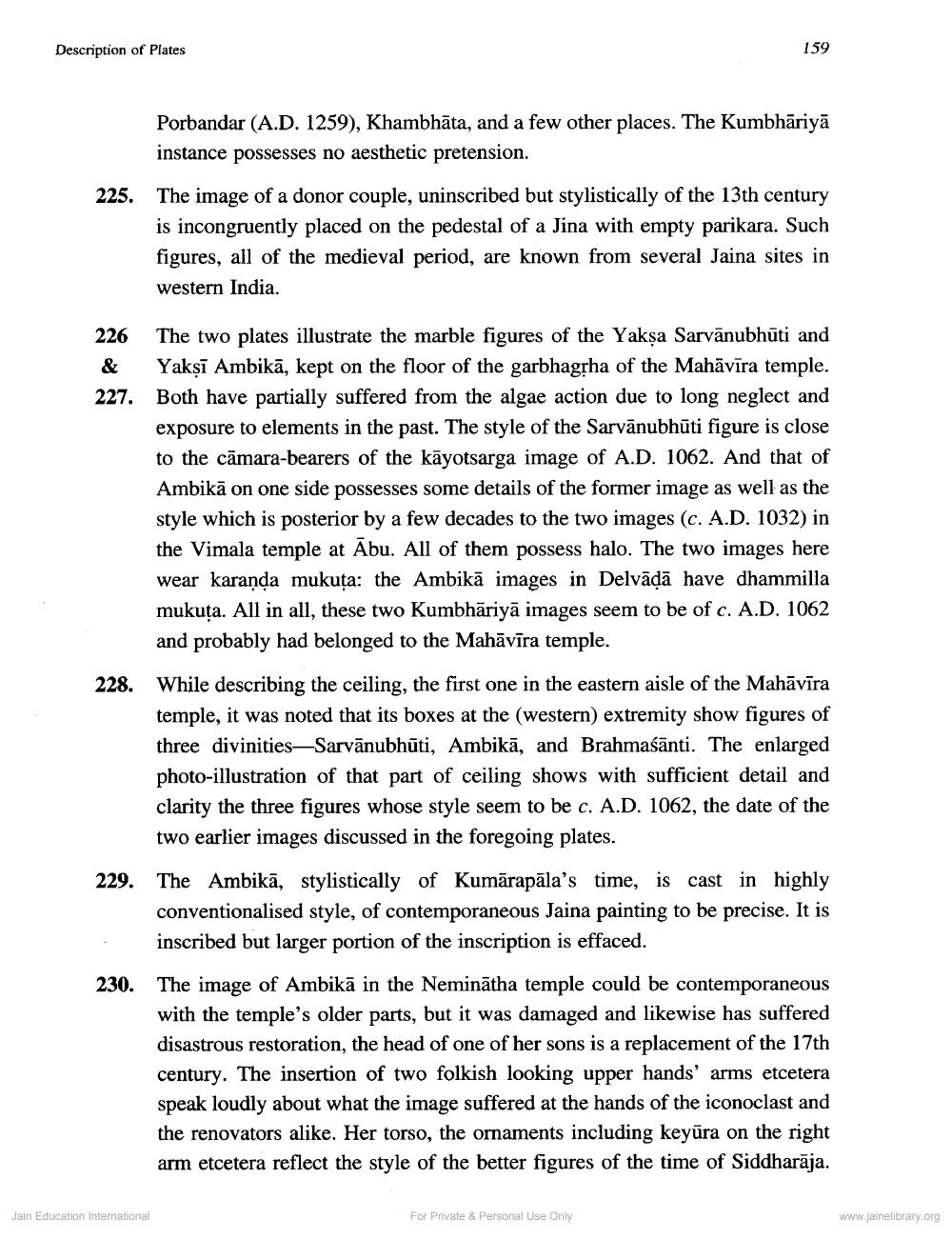________________
Description of Plates
159
Porbandar (A.D. 1259), Khambhāta, and a few other places. The Kumbhāriyā instance possesses no aesthetic pretension.
225.
The image of a donor couple, uninscribed but stylistically of the 13th century is incongruently placed on the pedestal of a Jina with empty parikara. Such figures, all of the medieval period, are known from several Jaina sites in western India.
226 &
The two plates illustrate the marble figures of the Yaksa Sarvānubhūti and Yakṣī Ambikā, kept on the floor of the garbhagpha of the Mahāvīra temple. Both have partially suffered from the algae action due to long neglect and exposure to elements in the past. The style of the Sarvānubhūti figure is close to the camara-bearers of the kāyotsarga image of A.D. 1062. And that of Ambikā on one side possesses some details of the former image as well as the style which is posterior by a few decades to the two images (c. A.D. 1032) in the Vimala temple at Ābu. All of them possess halo. The two images here wear karanda mukuta: the Ambikā images in Delvāļā have dhammilla mukuta. All in all, these two Kumbhāriyā images seem to be of c. A.D. 1062 and probably had belonged to the Mahāvīra temple.
228. While describing the ceiling, the first one in the eastern aisle of the Mahāvīra
temple, it was noted that its boxes at the (western) extremity show figures of three divinities—Sarvānubhūti, Ambikā, and Brahmaśānti. The enlarged photo-illustration of that part of ceiling shows with sufficient detail and clarity the three figures whose style seem to be c. A.D. 1062, the date of the two earlier images discussed in the foregoing plates.
229. The Ambikā, stylistically of Kumārapāla's time, is cast in highly
conventionalised style, of contemporaneous Jaina painting to be precise. It is inscribed but larger portion of the inscription is effaced.
230.
The image of Ambikā in the Neminātha temple could be contemporaneous with the temple's older parts, but it was damaged and likewise has suffered disastrous restoration, the head of one of her sons is a replacement of the 17th century. The insertion of two folkish looking upper hands' arms etcetera speak loudly about what the image suffered at the hands of the iconoclast and the renovators alike. Her torso, the ornaments including keyūra on the right arm etcetera reflect the style of the better figures of the time of Siddharāja.
Jain Education International
For Private & Personal Use Only
www.jainelibrary.org




